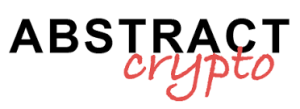In 2025, Mastercard will intensify its efforts to integrate the crypto world into the traditional financial system, focusing on stablecoin, fiat on-ramp systems, and tokenization. After years of experimentation, the digital payments giant is developing concrete solutions to facilitate the adoption of crypto by financial institutions and consumers.
A key element of the strategy will be the Crypto Credential system, designed to make transactions more intuitive and secure, eliminating the complexity of wallet addresses.
With such an ambitious roadmap, Mastercard is preparing to revolutionize the integration of cryptocurrencies into the global financial system in 2025.
Let’s delve deeper into the discussion in this article.
Mastercard wants to develop concrete solutions for the crypto industry
Mastercard, a multinational American electronic payments company, is not at all new to the crypto world. Its initial experience in the cryptographic sector dates back to February 2021, when for the first time it announced the intention to support certain digital assets within its network. A few months later, thanks to a collaboration with the Bakkt platform, it began allowing American consumers to buy, sell, and hold crypto through custodial wallets.
Now Mastercard, about 4 years after its first approach to the blockchain industry, recognizes that the times have matured to the point of being able to think about taking cryptocurrencies to the next level. Consider that compared to 2021, we now find an overall market capitalization greater by over 1 trillion dollars. At the same time, as shown in the Dune Analytics metric, the number of tokens in circulation has also exploded upwards. We are talking about approximately 37 million more assets compared to the top of the previous bull run.
Regarding the evolution of the market, Raj Dhamodharan, the crypto head for Mastercard, spoke out, reiterating the company’s position in an interview with Coindesk. The expert says that Mastercard has officially moved beyond the experimental phase and has begun working on concrete solutions for the sector. This involves actively building products that can contribute to the growth of the market, solving real problems for investors and consumers.
Last week Mastercard announced a partnership with the cryptographic firm Notabene that goes precisely in this direction. The collaboration between the two parties indeed implies the integration of the “Crypto Credential” service into the SafeTransact platform. The goal is to make digital asset transactions more secure and intuitive, addressing issues related to the complexity of wallet addresses and improving regulatory compliance.
Crypto Credential: the flagship service of Mastercard to ride the innovation
Launched in May 2024, Crypto Credential continues to be at the center of Mastercard’s efforts to make the entire digital asset sector increasingly mainstream.
This is a service that allows users to send funds using nickname indicators such as and email addresses instead of entering long and complex wallet addresses. By doing so, the system helps prevent crypto from being sent to the wrong recipients, potentially avoiding significant unwanted losses.
As of today, Crypto Credential is active on platforms such as Bit2Me, Lirium, and Mercado Bitcoin, as well as on SafeTransact thanks to the recent partnership with Notabene. This service represents a concrete example of Mastercard’s commitment to building real and functional solutions for the crypto industry.
Mastercard aims to provide practical tools that meet the needs of users, as emphasized by Dhamodharan, who literally states that:
“What prevents cryptocurrencies from becoming mainstream is actually the need for consumers to be able to find each other using what they already know”
The 2025 roadmap: fiat on-ramp, stablecoin, and tokenization
The roadmap of Mastercard for 2025 includes a significant consolidation of its initiatives in the crypto sector, focusing on three fundamental areas: the integration between the banking world and that of cryptocurrencies (on-ramp fiat), the growing adoption of stablecoin, and the evolution of the tokenization of assets.
The main objective of Mastercard is to act as a mediator between traditional finance and blockchain networks, creating new business opportunities. In particular, the company plans to announce new partnerships and interesting use cases in 2025, with a focus on creating a fiat on-ramp system that connects the two worlds. This step will be crucial to support Mastercard’s mission of simplifying global payments in cryptocurrencies.
Another central point for Mastercard’s roadmap is based on stablecoins, an increasingly indispensable tool within the logic of the crypto markets. The sector of stablecoins, backed by real assets, has grown significantly in recent years, dramatically increasing its market share. Dhamodharan believes that stablecoins will continue to be relevant in crypto transactions, to the extent of stating the following:
“We believe that the future will be a world where both deposits, because that’s where the money is, and the people and companies that hold money and stablecoins, which can be easily moved onto the blockchain and settled easily, will coexist”
Finally, Mastercard’s last focus for 2025 is on the niche of tokenization, which will offer the possibility to develop new business models based on the growing demand for tokenized real assets. A clear example of this is what has been developed in recent months by asset managers BlackRock and Franklin Templeton, bringing traditional finance into close contact with blockchain. Consider that already today about 23 securities products have been brought to the tokenization market, unlocking investments in crypto for 3.12 billion dollars.


